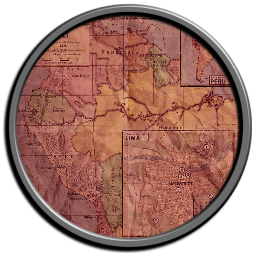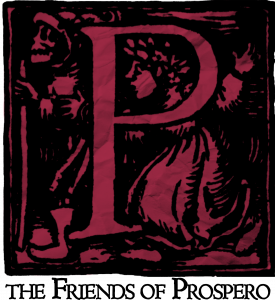March 19th, 1921, part III
After leaving Larkin in his hotel room, the group headed back to the university to check on the well-being of Professor Sánchez. With police and paramedics now on the scene, the professor was found sitting on the back of an ambulance, apparently in a state of shock from his ordeal and complaining of an intense pain in his stomach.
The professor reluctantly admitted that, due to his current state, he would not be able to accompany the group to the pyramid as they had discussed earlier in the day, but expressed his hope that they would carry on without him, thus preventing Larkin from looting the fabled treasure.
Deciding to keep Sánchez completely in the loop about their discoveries, the group confessed to him the visions they experienced while wearing the strange golden mask found in de Mendoza’s room. As the stories of their visions progressed, Sánchez began to perspire more aggressively while growing noticeably paler. After a few minutes of this, he collapsed onto the ground. Laying on his back, eyes wide and fluttering, the fallen man continued to grasp at his midsection.
While administering a rudimentary examination of the professor’s state, Brochet noticed something gelatinous moving inside the man’s abdomen. Incapable of speech, Sánchez was not able to address this discovery directly, but the pain in his eyes was enough to convince witnesses that immediate and in-depth medical attention would be required. Rejecting this realization,Holder opted instead to induce vomiting, which produced what appeared to be a roughly fist-sized and rancid-smelling larva specimen.
Reeling in horror, Ford instinctively pinned the larva to the ground with his knife while Brochet brought his hand axe down upon its body, thus severing it in two. The specimen was then collected by Brochet and saved for further examination.
With Sánchez now in the capable hands of paramedics and doctors, the group attempted to enter the university but was stopped and then questioned about the attack by local police. Mentioning de Mendoza and the Hotel España but stopping short of giving any further information, the interrogating officer allowed the group to leave, with the understanding that they were to stay available for further questioning.
March 20th, 1921
The following morning, it was decided that having another look at de Mendoza’s room at the Hotel España was in order. Upon entering the room, however, it was quickly determined that the room had not been used since they last entered.
Next door, they found Larkin in his room, preparing for the day. Looking much healthier than he had the previous night, Larkin was eager to discuss the expedition. Claiming only a vague recollection of the state he was found in only a few hours before, Larkin reassured the group that de Mendoza would no longer be part of the expedition due to his murderous actions and apparent violent tendencies.
Further, Larkin confessed that de Mendoza knew a great deal about the pyramid, its location, and its contents, and thus feared the man would attempt to beat them to their rightful find. Despite their misgivings about Larkin’s physical and mental states, the group saw no other option than to go along with his plan—at least for the time being—and beat de Mendoza to the pyramid.
With the conversation now concluded, the group departed to visit Prof. Sánchez at the hospital. On their way, they noticed that, on more than one occasion, local residents seemed to slink away from them as they approached, as if afraid for some reason. At a loss to explain this phenomenon, they pressed on toward their destination.
Finding the professor looking much better than he did the night before, although still quite gaunt and pale, Brochet showed him the now dried-out remains of the larva, which the poor man had regurgitated only recently. Horrified at the sight of the thing, Sánchez became exhausted and asked to be left alone to rest, but not before theorizing that, somehow, the man who accosted him in his office must have inserted the vile thing within him.
Warning them of the dangers of throwing their lot in with Larkin—even if only temporarily—Sánchez then wildly exclaimed that there were things in the jungle to be feared. With the look of a crazed man under the influence of an unknown entity, and thus not understanding his own words, Sánchez blurted out these warnings and then passed out on his bed.
Upon leaving the hospital, the odd local reaction to the group was again noticed in a small group of women at a vegetable stand. Approaching the stand, the women began to point and whisper before apprehensively shying away with expressions of fear written on their faces.
Elias, who spoke Spanish with reasonable accuracy, made a noble effort to intervene on behalf of his companions. Noticeably calmed by the man’s Spanish, the vegetable stand owner confessed to him that it was only the other three—Ford, Holder, and Brochet—who were mistrusted and feared. When asked why, her reply was matter-of-fact and blunt: Kharisiri.”
After resuming their course back to the hotel, Elias began to fill the group in on some of the lore he had uncovered for his upcoming book about the Kharisiri myth. The legends, according to Elias, described the beings as white-faced men who sucked the fat of innocent farmers and their families in the Peruvian highlands.
Continuing, he stated that while the historical information seemed to be mostly fanciful folklore, he had found that these accounts gained some credence after uncovering contemporary stories of murder and mutilation high in the mountains.
He believed that some form of pagan ritual was at the root of the tales of the kharisiri and that, in all likelihood, the attacks were perpetrated by humans, not supernatural creatures. The mutilations reported may have been some form of human sacrifice, which, to Elias, was clear proof that a death cult was operating in Peru.
Taking his research a step further and considering the country’s history, Elias soon developed the hypothesis that these legends and cults stemmed from the arrival of the Spanish conquistadors in the 16th century and that an associated sect may have survived to the present day. This evidence, he concluded, indicated an all-too-real cult was still in operation right here in Peru, one that routinely engaged in ritualistic murder and barbaric butchery.
Peru: Episode VII • Peru: Episode VI • Peru: Episode V • Peru: Episode IV • Peru: Episode III • Peru: Episode II • Peru: Episode I

